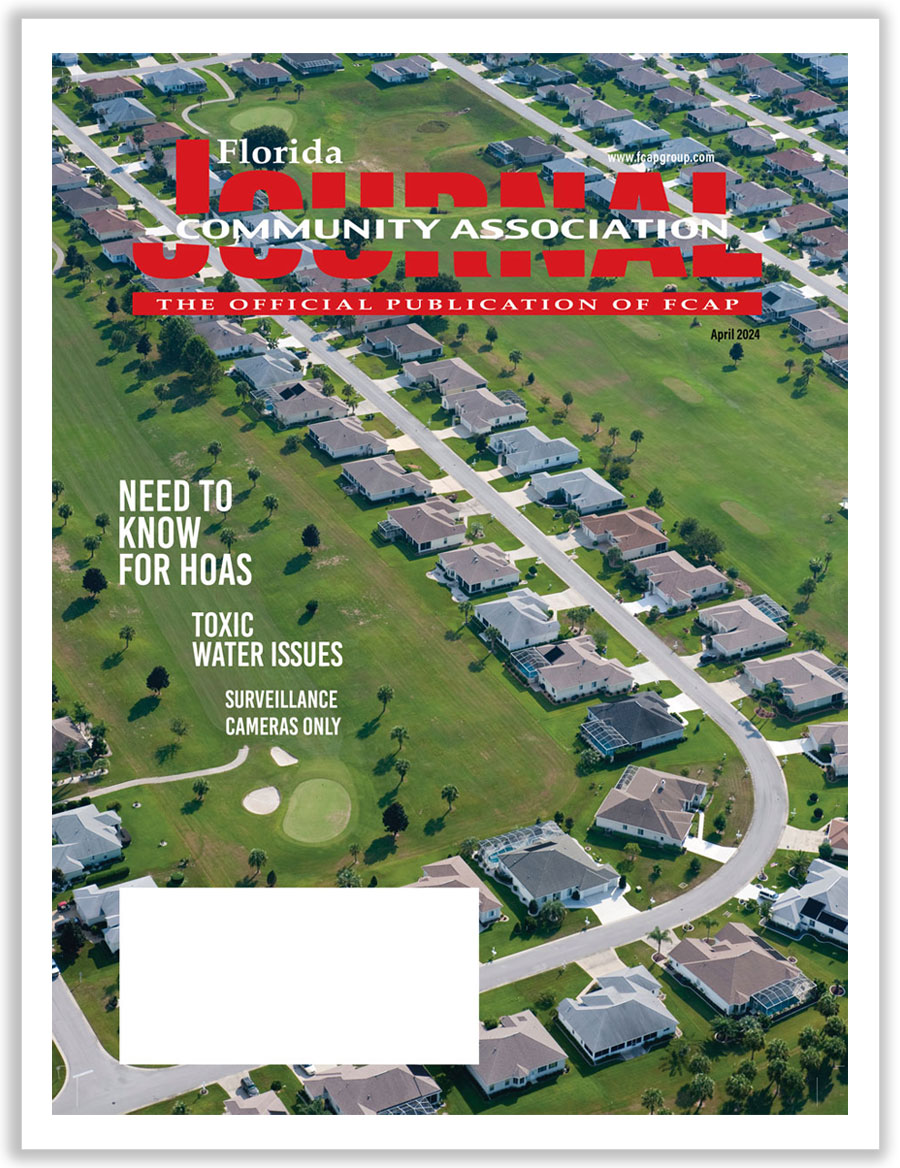
CAMs Bear the Brunt
By Betsy Barbieux, CAM, CFCAM, CMCA / Published September 2021

With the shortage of CAMs around the state of Florida, a shrinking pool of skilled employees who will work, more planned community developments, communities unable to find willing board members and concerned owners to assist with management duties, slower response times for roofing and paving repairs, the increasing costs of concrete and lumber, anger leading to violence on the rise nationwide, and what seems to be fewer hours in a day, CAMs are bearing the brunt of it all.
There are reports from CAMs of frightening altercations with owners; telephone calls, texts, and emails with personal attacks and threats; unusual anxiety; panic attacks; depression; and avoidance behaviors. Could these CAMs have a type of post-traumatic stress disorder (PTSD)?
The symptoms of PTSD may include nightmares or unwanted memories of the trauma, avoidance of situations that bring back memories of the trauma, heightened reactions, anxiety, anger, or a depressed mood. But remember, everyone’s experience is different.
Not to diminish those veterans, first responders, medical workers, and others who do have PTSD, but there are CAMs who are experiencing somewhat similar symptoms caused by their work environment—work environments that could be considered “toxic” with “toxic behaviors” and types of harassment.
A toxic work environment could be described as one where CAMs find it difficult to work due to the negative or hostile atmosphere created by coworkers, board members, or the community culture itself. Signs of a toxic work environment could include hateful or poor communications, cliques, factions, gossip, poor board leadership, unmotivated board members, employee or board turnover, no work-life balance, feeling burnt out, or the feeling when your gut revolts every Monday morning.
Toxic work environments can evolve when board members, residents, or employees consciously or unconsciously have biases against people because of race, color, national origin, gender, disability, religion, familial status, education, background, income, and more.
Sometimes, toxic work environments grow from some sort of seedling. Whether the seed is a bad manager, a domineering board president, an over-budget year, or out-of-control owners, this is where things could go south.
When your gut revolts, it is likely a sign of workplace burnout. The World Health Organization (WHO) has recognized workplace burnout as a legitimate medical diagnosis. Burnout can be a surefire sign of a toxic work environment or at least a work environment that does not “work” for you. This is the workplace where the saying, “You don’t leave a job, you leave a bad boss,” is true. Or in our industry, you leave a bad board or bad management company.
Too often, board members and residents are reported to exhibit toxic behaviors which include aggressiveness, bullying, gossiping, narcissism, passiveness, various types of harassment, and blaming and shaming. Any behavior, whether from within the office or from board members or residents, that interferes with an employee’s job performance or which creates an intimidating, offensive, or hostile work environment must be stopped.
If the association employs a CAM and/or other employees, the responsibility for stopping this behavior is solely on the board of directors. If the CAM is working for a management company and the toxic behaviors are from within the office, it is the sole responsibility of the management company to make sure the behaviors that cause the toxic environment are stopped. If the CAM works for the management company and the toxic behaviors are happening on property, the management company and board of directors should share the responsibility for stopping the toxic behaviors.
What should board members and management companies do?
First, set an example. Be sure your behaviors and words (whether written or spoken) are civil, courteous, consistent, and professional.
Second, create a policy defining unacceptable behaviors and communicate that policy to the staff and all owners and tenants. After crafting the behavior policy, the board of directors should vote on it at a properly noticed board meeting with an agenda that includes the new policy. Management companies could amend their employee manual to include language for appropriate (and inappropriate) behaviors.
Third, managers could include in their employment agreements or management contracts a “non-interference” clause. Several samples are as follows:
“The association board shall not interfere, nor permit, allow, or cause any of its officers, directors, or owners to interfere with the agent in the performance of its duties or the exercise of any of its powers hereunder.”
“In the event the life or safety of a manager or his/her family is threatened or other-wise appears in danger because of the performance of the manager’s official duties, the association shall pay reasonable costs incidental to the protection of the manager and his/her family. The manager can request for the association to pay all or part of the charges. Protection, if required, will be sought from the regular police authorities.”
Fourth, boards of directors and management companies should be sure that Employment Practices Liability Insurance (EPLI) is included in their insurance package. EPLI is a type of liability insurance covering wrongful acts arising from the employment process. The most frequent types of claims covered under such policies include wrongful termination, discrimination, sexual harassment, and retaliation.
Fifth, boards of directors and management companies should create a policy that outlines reporting procedures for unacceptable behaviors. Take all claims seriously. Do not fail to take immediate action when such behaviors become known to you.
Boards of directors and management companies must take action when residents (or vendors) bully or harass their employees. If you are in doubt as to how important and serious an issue this could be for your association, consult with your insurance agent. In today’s litigious society with uncontrolled emotions and people who seem to have forgotten their manners, be sure you have current and adequate EPLI coverage.
Preventing toxic work environments is an ongoing process. It requires boards and management companies to take a closer look at what is happening around their offices and put themselves into the shoes of all types of people.
P.S.—Florida CAM Schools is pleased to announce the addition of Jim Cornell to our staff. Jim is the chaplain at Lake County Detention Center, Tavares, Florida, and associate pastor/music minister at Emmanuel Baptist Church in Leesburg. He is available by appointment to talk with any CAM who is experiencing distress at work or at home. Email Betsy@FloridaCAMSchools.com or call the Florida CAM Schools office at (352) 326-8365 to schedule a telephone or videoconference appointment with Jim.
Betsy Barbieux, CAM, CFCAM, CMCA
Florida CAM Schools
Betsy Barbieux, CAM, CFCAM, CMCA, guides managers, board members, and service providers in handling daily operations of their communities while at the same time dealing with different communication styles, difficult personalities, and conflict. Effective communication and efficient management are her goals. Since 1999, Betsy has educated thousands of managers, directors, and service providers. She is your trainer for life! Betsy is the author of Boardmanship, a columnist in the Florida Community Association Journal, and a former member of the Regulatory Council for Community Association Managers. Subscribe to CAM MattersTM at www.youtube.com/c/cammatters. For more information, contact Betsy@FloridaCAMSchools.com, call (352) 326-8365, or visit www.FloridaCAMSchools.com.




